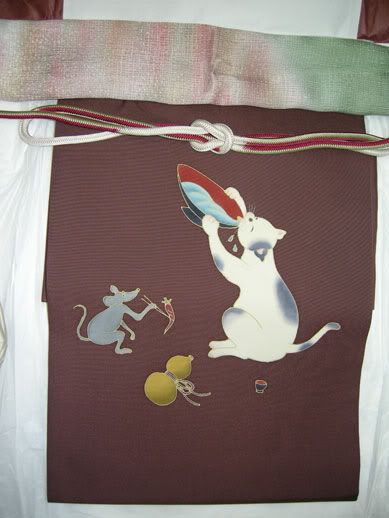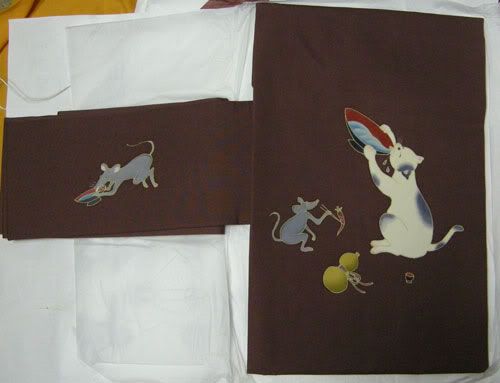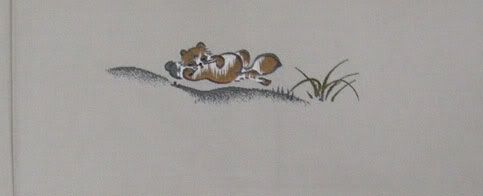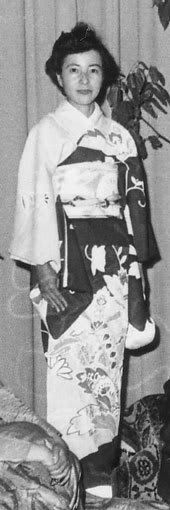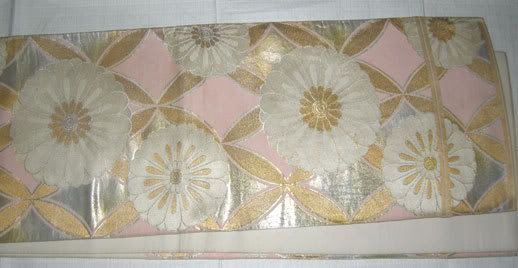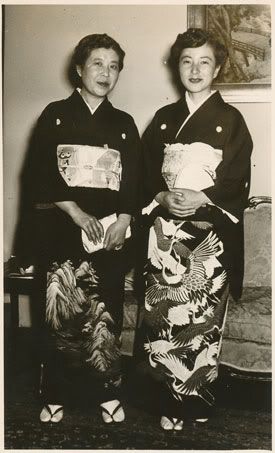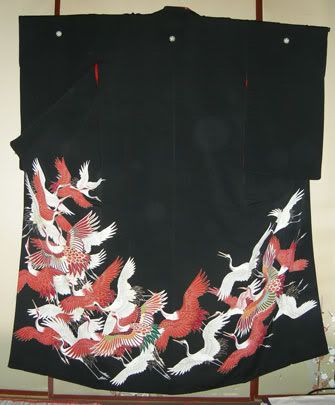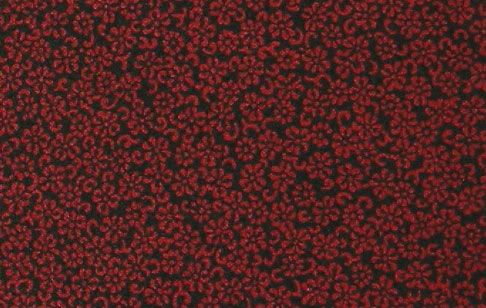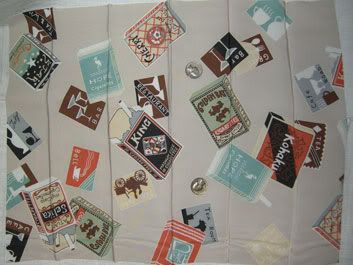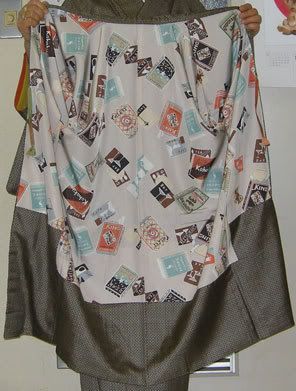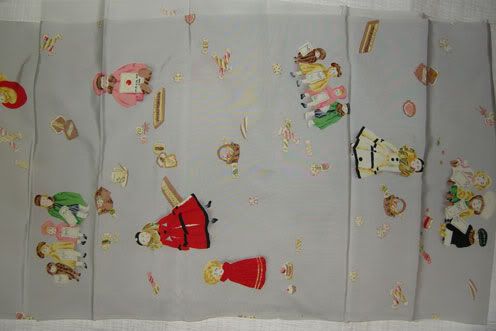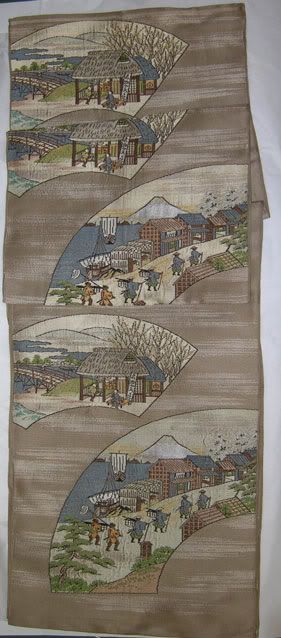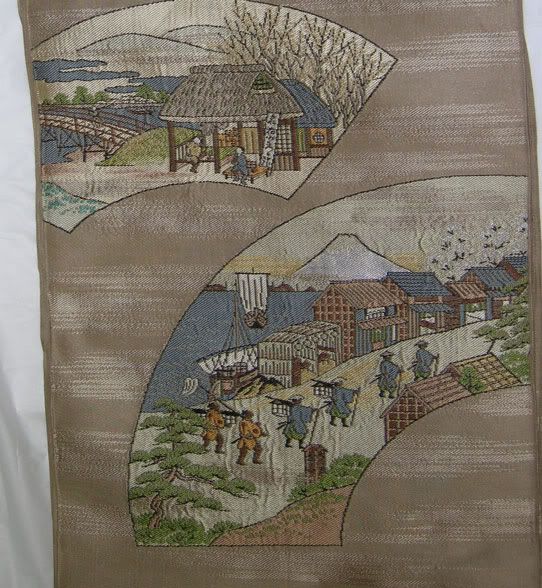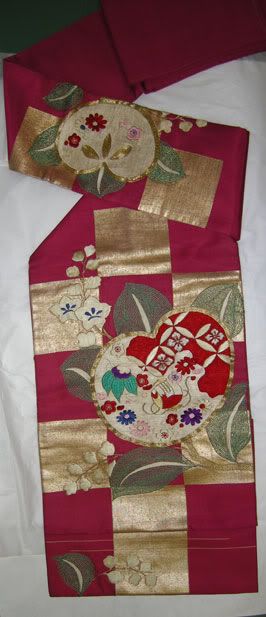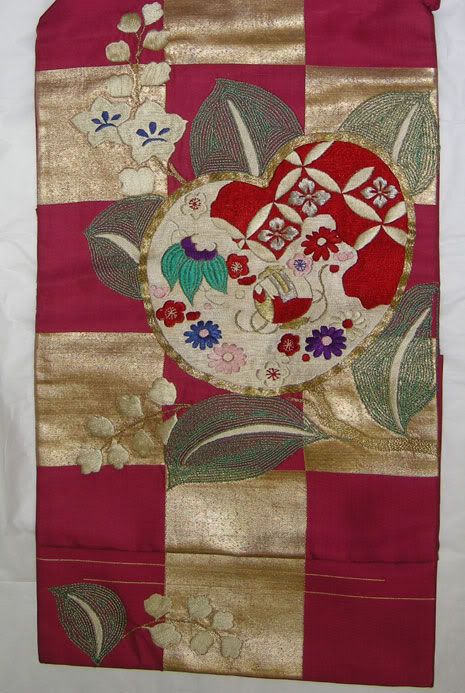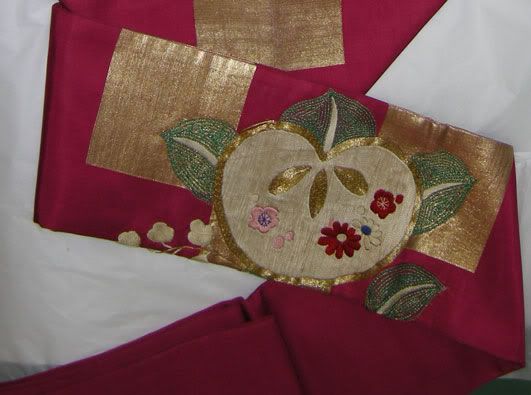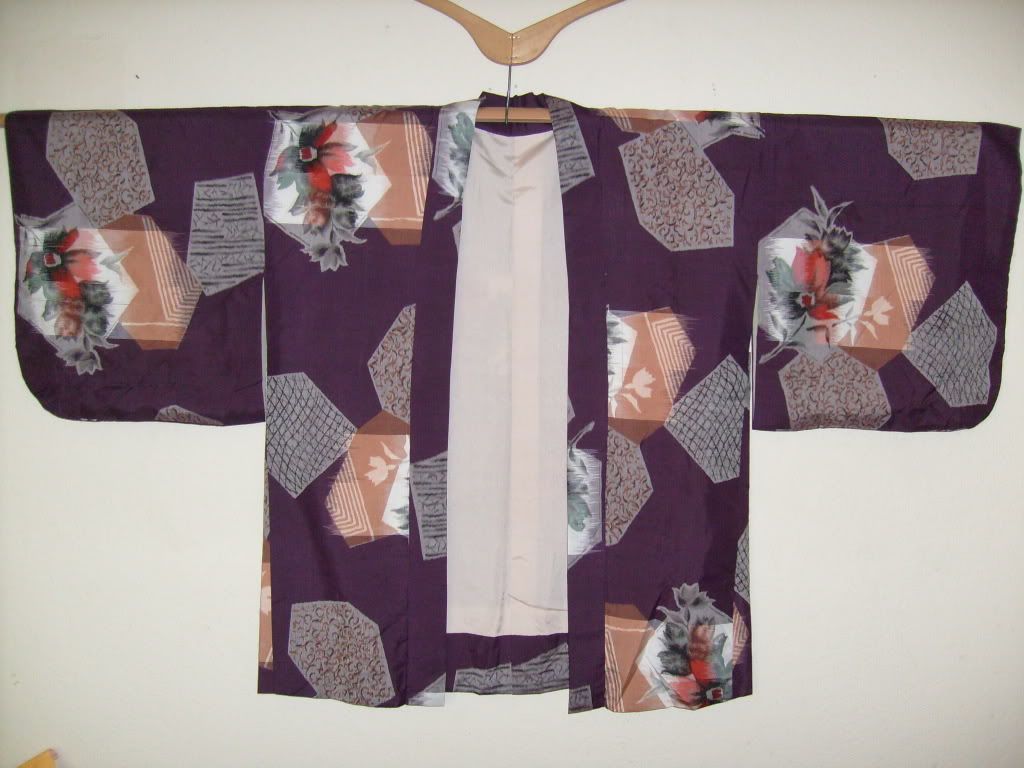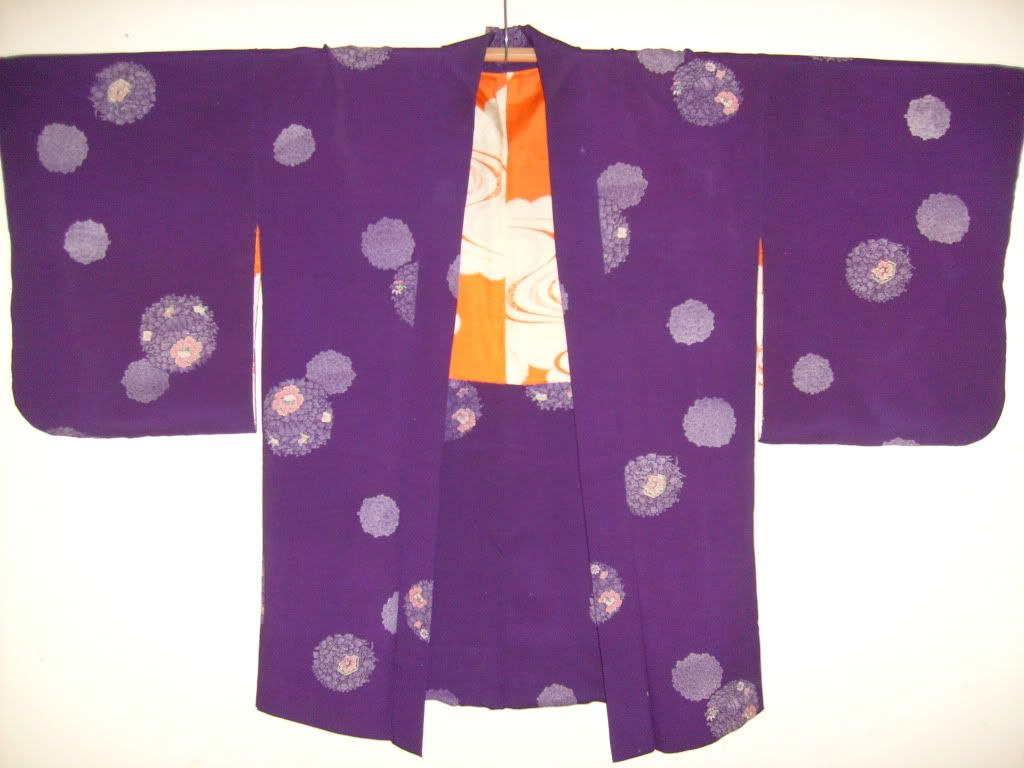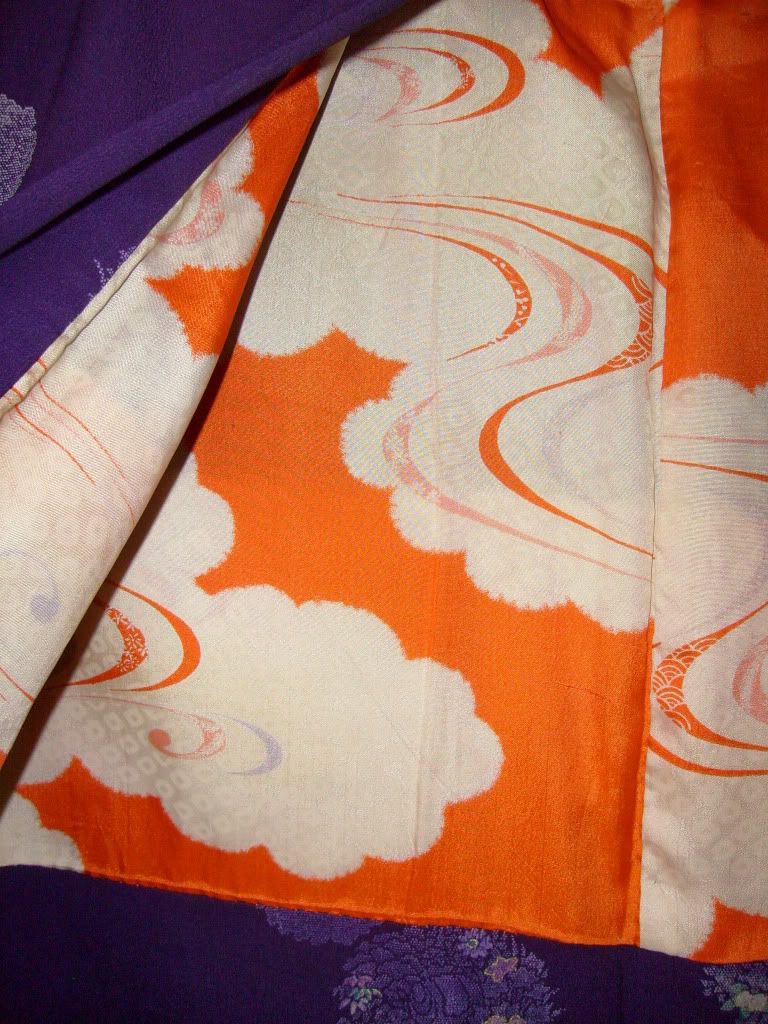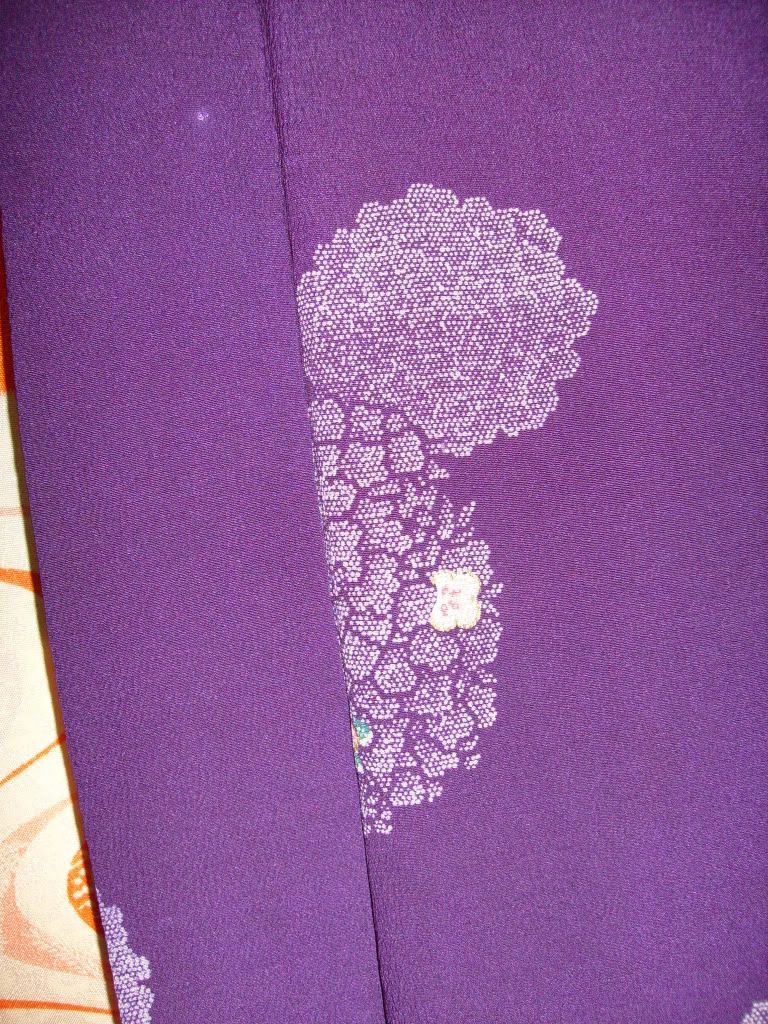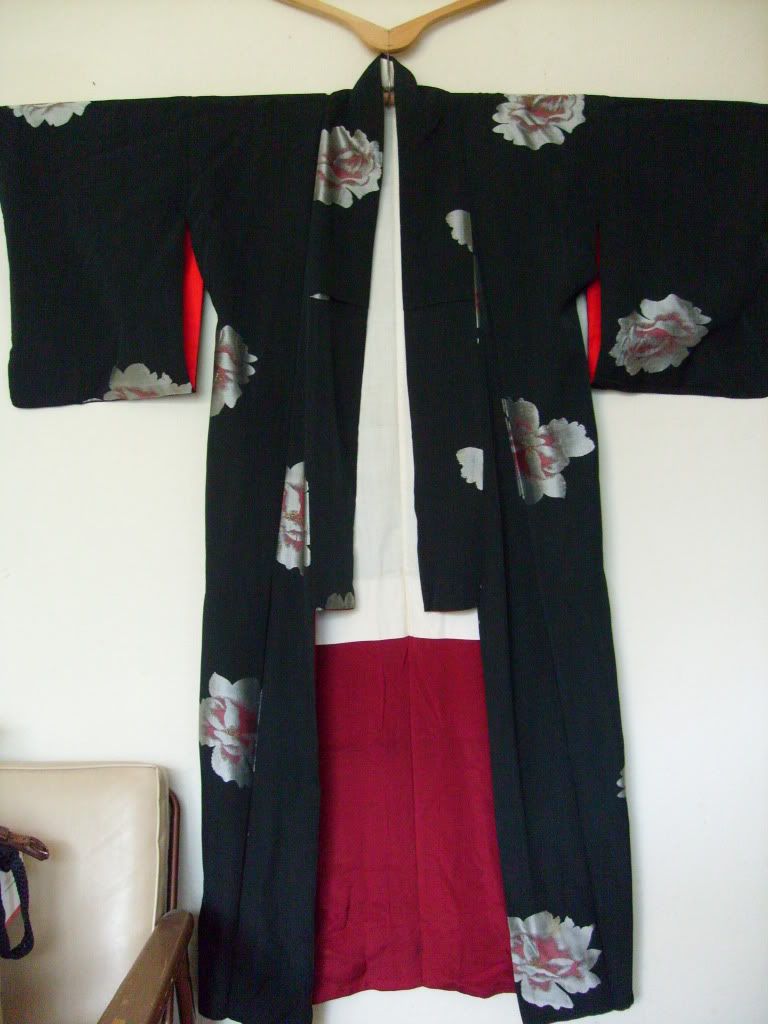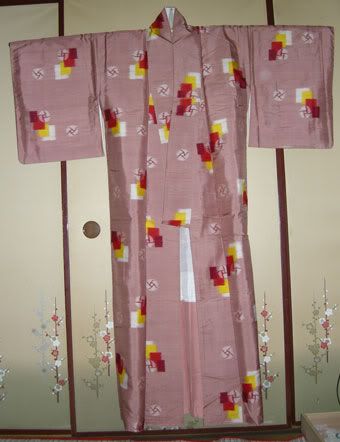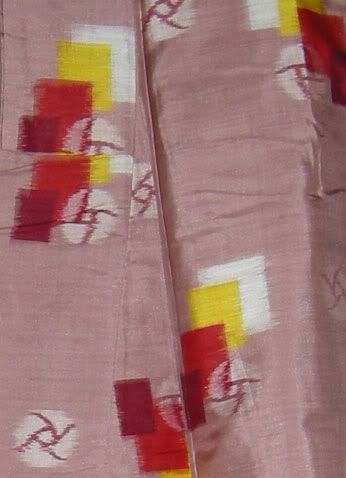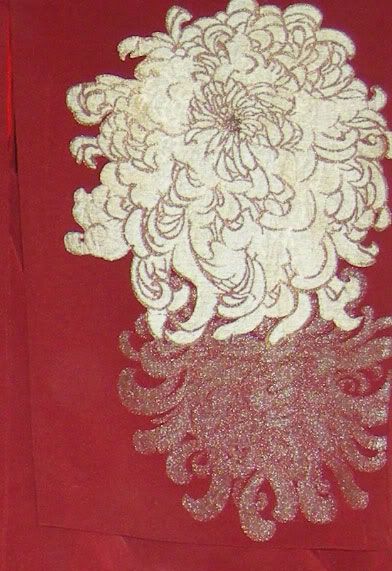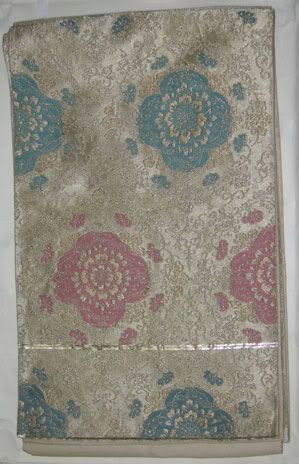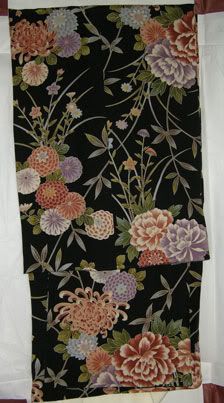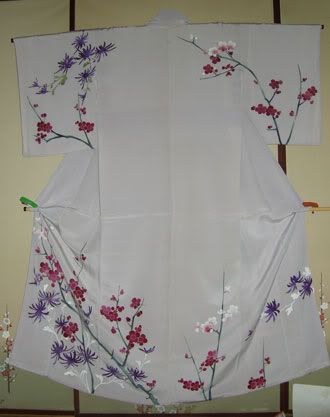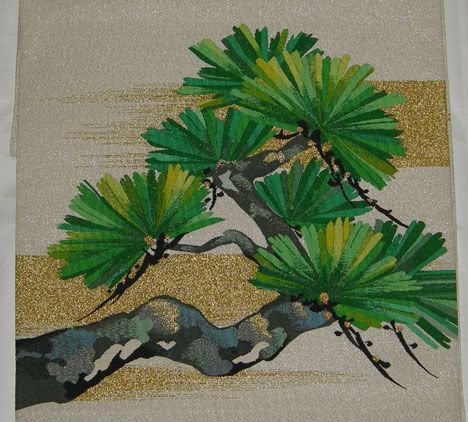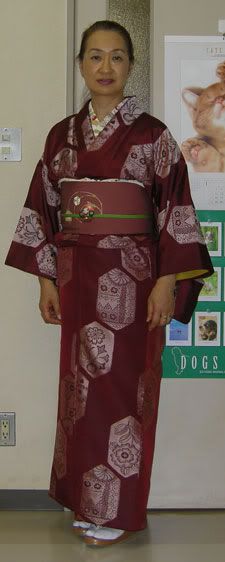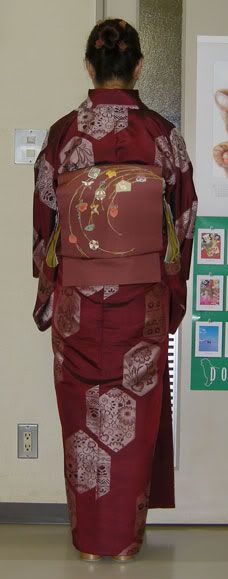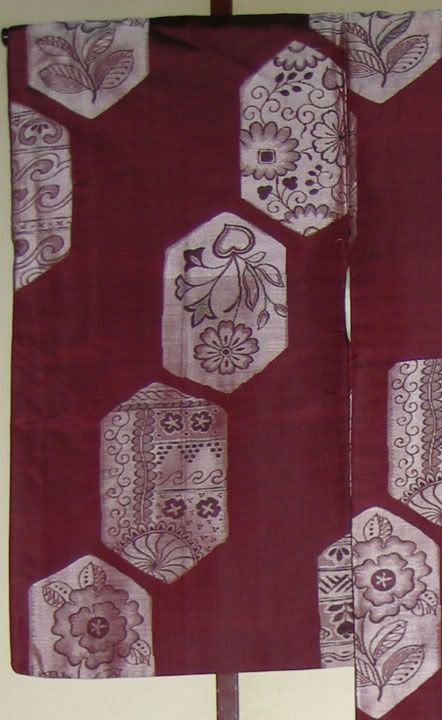LaMedicine
One Too Many
- Messages
- 1,116
It's going to depend on when you put the dates for traditional or non-traditional. Also, on whether by 20thC thing, do you mean pre-WWII or post? After all, 20thC spans 100 years, and at least in western clothes, especially female clothing, the change during this time span is no less dramatic to the point that you might consider extreme. Compared to that, the changes in kimono designs are subtle.Mahagonny Bill said:Where does this picture fit in with traditional/non-traditional styles? Is having an obi with a cartoonish design like this a 20th century thing, or were there humorous depictions like this put on earlier designs?
However, with the obi, there are some particular changes that took place within the past 100 years, and one of them is the improvisation of the Nagoya obi. Nagoya obi has the section of the obi that is tied around the body sewn into half the width of the back panel. This design was improvised by the headmistress of Nagoya Girls' School in 1919, hence the naming, Nagoya obi. With the improvisation of the Nagoya obi, the pattern of having the motifs placed only on where it is seen--in the front and the back, also became popular. Before this, most obi had the motifs woven in the entire length.
The obi below is a copy of an early 1920s desgin. Amazingly contemporary, don't you think?
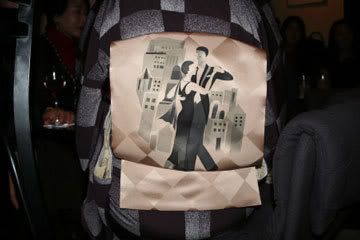
That said, caricature in Japan has been around for quite a while. We are the land of manga and anime, after all. The origingal Japanese caricature dates back to the mid 12thC, to the Chojyu Giga scrolls (a scroll of caricatures of birds and animals).
This is a jyuban, an underkimono, that's worn inside the kimono. It is not the innermost wear so, it isn't worn directly over naked skin. The collar is meant to show from under the kimono collar, and is called han-eri, half collar. The standard/formal han-eri is white, but various patterned ones are often used to add color and accent in less formal scenes. A cotton shirt called hada-jyuban is worn underneath the jyuban. Anyway, the motif is the copy of Chojyu Giga.
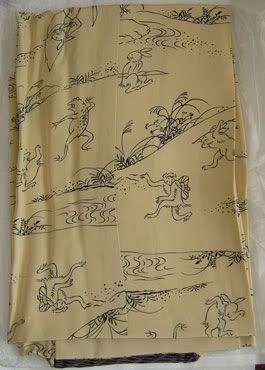
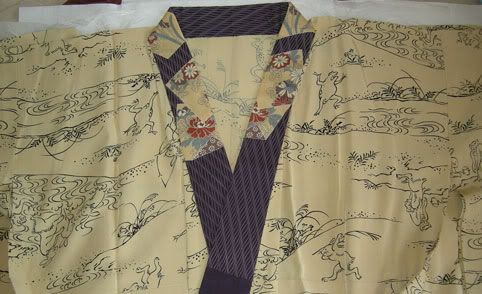
The motif of the obi below is based on Chojyu Giga as you can see, with the rabbits playing modern and western instruments. These kind of adaptations aren't anything new.
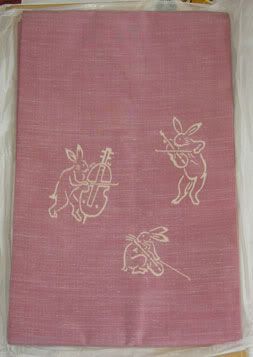
What one would consider classic designs and motifs are prefered for formal occasions, but relatively modern motifs are incorporated as well, especially if the motifs go along the theme of the particular occasion. The cat and mouse type of motifs, however, are strictly for casual combinations.
Iki--subtle and chic/sassy/sophisticated--was highly sought after in the Edo era, especially among the affluent commoner class. This was in part due to the crackdown on extravagance by the Tokugawa Bakufu, the ruling Edo government. Extravagant kimonos were persecuted, so the affluent obeyed the rules on the outside--followed the rules for the outer fabrics, but the linings were another story. They couldn't be seen by just a cursory surface check, so the people vied with each other, who could come up with the best lining, be it flashy, funny, extravagant, luxurious, chic, or sophisticated. In other words, iki. With the Yuzen dye method developed in the late 17thC, it became possible to paint just about any kind of motif onto silk fabric, so I wouldn't be surprised if contemporary (for the particular period) designs were incorporated into them, and that they included caricatures that made fun of the ruling class, or particular social events of the times.
Go is a highlly intricate and intelligent game. To be honest, I don't know the rules save for that you surround your opponents stones to win. No, I don't mind your mentioning and explaning the traditional Japanese board games. Do you know that there's a city that holds a human Shogi game once a year?
